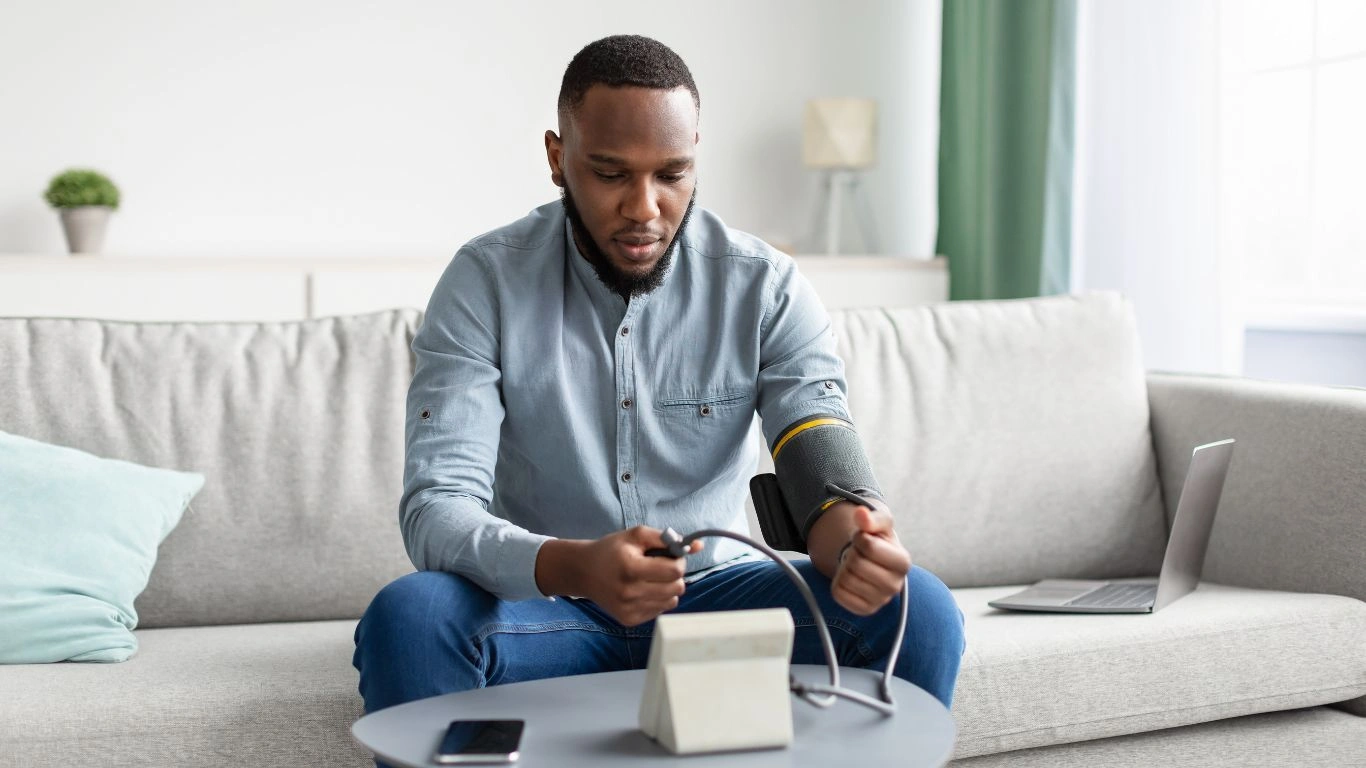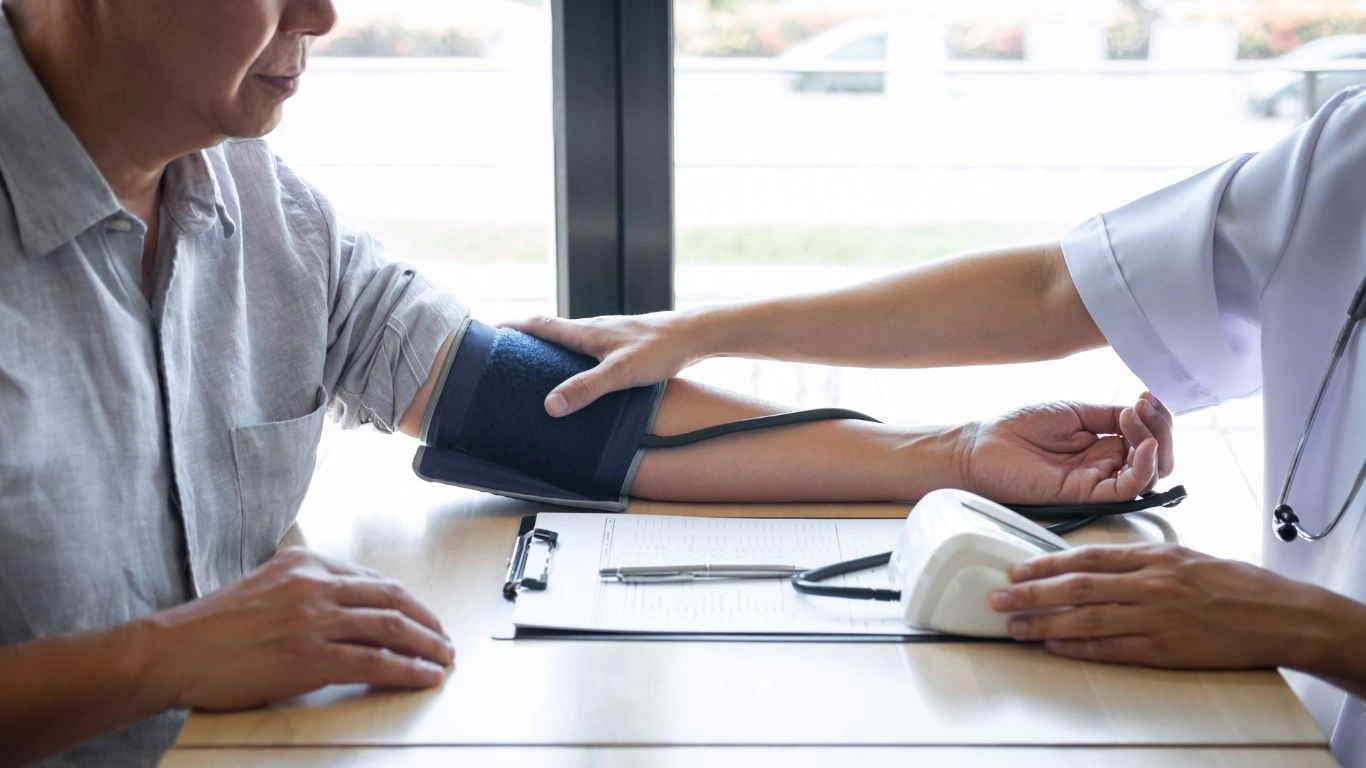How to Stay Calm During BP Reading and Avoid False High Results
Let me guess—you’re sitting in the exam room, the cuff is tightening around your arm, and suddenly, your heart feels like it’s trying to set a new world record. Yep, I’ve seen this more times than I can count in my Internal Medicine clinic. It’s that classic moment when your blood pressure reading climbs—not because you’re hypertensive, but because you’re anxious about the very process of checking it. So, if you’ve ever wondered how to stay calm during BP reading, you’re not alone—and you’re definitely in the right place.
Why We Get Nervous About Blood Pressure Checks

First, let’s talk about the elephant in the room—white coat syndrome. You’ve probably heard of it, maybe even joked about it. But it’s a real thing. As a physician, I see patients whose readings spike 20-30 points just from the anxiety of being in a medical setting.
There’s something about the sterile environment, the anticipation, and even past experiences with doctors that can trigger a stress response. Your body’s natural fight-or-flight mode kicks in, your heart rate rises, and so does your BP. Doesn’t mean you’re sick—it means you’re human.
How to Stay Calm During BP Reading: Real-Life Strategies That Work

1. Breathe like you mean it
Sounds simple, right? But controlled breathing is incredibly powerful. I often tell my patients to try the 4-7-8 technique: inhale for 4 seconds, hold for 7, exhale for 8. This slows your heart rate and signals to your nervous system that you’re safe.
2. Arrive a few minutes early
Rushing into your appointment straight from traffic is practically an invitation for high BP. Give yourself a buffer to sit, chill, and let your heart rate stabilize. I usually recommend at least 5-10 minutes of quiet sitting before the reading.
3. Talk it out—yes, really
Let your nurse or doctor know you tend to get nervous. We appreciate the honesty. I’ve had many patients who, once they shared their anxiety with me, felt a huge weight lift. It’s okay to say, “Hey, I get nervous during these, can we take a second?”
4. Position matters more than you think
I can’t stress this enough: your BP reading depends on proper positioning. Make sure you’re seated, back supported, feet flat on the ground, and arm at heart level. Crossing your legs or dangling your feet can skew your numbers.
5. Skip the small talk during the reading
I know, I know—we love to chit-chat. But if you’re trying to get a calm, accurate reading, it’s best to stay silent and breathe slowly during the process. Even answering a quick “How’s your day going?” can cause a slight bump in numbers.
6. Use at-home practice readings
If you’re someone who gets stressed about in-office readings, I often recommend getting a home BP monitor. Doing a few calm, quiet readings at home builds familiarity and confidence. Just make sure the device is validated (ask your doc for a recommended brand).
What I Tell My Own Patients (And Maybe You Need to Hear Too)

I always tell my patients this: One high number doesn’t mean you’re in trouble. Blood pressure readings are just a snapshot, not your whole health story. It’s the pattern over time that matters. Getting a high reading while you’re nervous doesn’t mean you’re failing—it means your body is reacting to stress, and we can work with that.
In fact, sometimes I’ll recheck BP at the end of the visit once someone’s had time to relax—and sure enough, it drops back down. So don’t panic. You’re not broken. You’re not doing it wrong. You’re just reacting like a human being under a little pressure (literally).
Quick Recap of What Helps:
- Practice deep breathing before and during the reading
- Give yourself time to settle in before the cuff goes on
- Communicate any anxiety to your healthcare provider
- Ensure correct posture and positioning
- Use quiet, distraction-free settings when possible
- Consider monitoring BP at home for a fuller picture
Common Mistakes That Can Sabotage Your BP Reading

Even if you’re doing your best to stay calm, there are a few small but mighty things that can throw your blood pressure reading off. I see this often in clinic, and honestly, many folks have no idea they’re doing anything wrong. So let’s clear up a few sneaky culprits.
1. Talking during the measurement
Yup, even casual chatting can elevate your systolic BP by 10-15 points. Your heart rate gets a little boost, your respiratory rhythm shifts, and just like that—your numbers jump. I always gently ask my patients to take a break from conversation during the actual reading, and it makes a big difference.
2. Cuff over clothing
This one’s so common it’s practically standard at home. But measuring BP over a sleeve—even a thin one—can lead to falsely elevated readings. Always place the cuff on bare skin. I’ve even had patients whose “at-home high BP” normalized once they corrected this simple habit.
3. Improper arm positioning
Your arm should be at the same level as your heart. Too low or too high? You’re going to get skewed results. A supported arm resting on a table or armrest works best. I usually place a folded towel under a patient’s elbow to get it just right—small fix, big accuracy boost.
4. Full bladder (yes, really)
Weird but true—a full bladder can increase systolic BP by up to 10-15 mmHg. I always recommend using the restroom before your reading. It’s such an easy fix and often overlooked.
How to Stay Calm During BP Reading—When You Have Anxiety

Now, let’s talk about those of you who experience more than just mild nerves. If you’ve got health-related anxiety or generalized anxiety, calming down for a BP reading can feel like a Herculean task. Believe me—I’ve worked with patients like this for years, and I’ve learned a few tricks that actually help.
1. Visualization
This isn’t woo-woo, it’s neuroscience. When you visualize a calming scene—like sitting on a beach or walking through a forest—your body often mimics the physiological state that matches it. I had one patient who would imagine petting her dog during every BP reading, and it worked like magic. Her numbers dropped by 15 points.
2. Progressive muscle relaxation
This is one I even use myself after a long day at the clinic. Starting with your feet and working your way up, you tense and then release each muscle group. By the time you get to your neck and shoulders, you’ll probably feel your whole body loosen up—and your BP will reflect that.
3. Bring a calming object
It might sound silly, but having a familiar item—like a worry stone, a small photo, or even your favorite scarf—can anchor you. It’s a grounding technique that offers real comfort, especially in clinical environments that can feel cold or impersonal.
When to Trust the Reading (and When Not To)

One of the most common questions I get from patients: “Is that number real?” It’s a fair question, especially when your reading feels way off from your usual. Here’s how I usually break it down:
- If your BP is elevated but you’re nervous: We probably won’t make treatment decisions based on that single number. We might recheck it at the end of the visit or recommend home monitoring for a clearer picture.
- If your BP is consistently high across multiple visits: Then yes, it’s likely real—and we’ll start talking management, whether that’s lifestyle changes or medications.
- If your home and office readings don’t match: That could be white coat hypertension or masked hypertension (yep, that’s a thing too). In either case, we’ll consider 24-hour ambulatory BP monitoring for more insight.
Bottom line? One reading doesn’t define your health. I always assess patterns over time, take your context into account, and consider your emotional state. That’s part of the art of medicine, not just the science.
And a little reassurance…
If you’re doing all the right things and still getting nervous during readings—don’t beat yourself up. Seriously. That stress loop can become a self-fulfilling prophecy. I’ve seen patients go from panic to peace just by changing their mindset: “This reading is just one moment. It doesn’t decide my health destiny.”
And if that mindset shift is hard? That’s okay too. We’re here to work through it together. You’re not alone in this.
Advanced Strategies for Staying Calm During BP Readings

By now, you’ve got a solid handle on the basics of how to stay calm during BP reading. But what if you’re ready to go deeper? Let’s talk about strategies that go beyond the cuff—because managing your response to BP checks isn’t just about one moment. It’s about creating a calmer baseline in general.
1. Build a daily relaxation routine
Honestly, this has been a game-changer for a lot of my patients. You don’t need to meditate for an hour in a Himalayan cave—just 5 to 10 minutes a day of intentional calm can reset your nervous system. Try box breathing, guided meditations, or even journaling. Find what works for you and stick with it.
2. Incorporate gentle movement
Yoga, tai chi, walking—these aren’t just “nice-to-haves.” They’re legitimate tools for calming your sympathetic nervous system. I had a patient in her 60s who started doing a simple chair yoga routine three mornings a week, and her BP stabilized beautifully—without needing to increase her meds.
3. Cut back on the stimulants
This one’s tricky, especially for my fellow coffee lovers (I’m definitely guilty too!). But if you’ve got anxiety around your BP readings, caffeine and certain decongestants can make it worse. Even energy drinks or pre-workout supplements can quietly push up your pressure and rev up your nervous system. Be mindful and track how these affect you.
How to Talk to Your Doctor About BP Anxiety

Let me say this loud and clear—you have the right to talk openly about anxiety during BP checks. And honestly, most physicians (myself included) are glad when patients bring it up. It helps us help you.
What to say
It doesn’t need to be fancy. Try something like:
- “My numbers are always higher in the office. I think I get nervous.”
- “Can we check my BP again after I’ve had a few minutes to relax?”
- “Would you recommend home monitoring so I can get a more accurate picture?”
These conversations give us context. We might suggest 24-hour ambulatory BP monitoring, or use a series of readings over time rather than relying on that one in-office number.
Advocating for yourself matters
If you feel brushed off or unheard, you deserve better. Your comfort and understanding are part of your health. As a physician, I want my patients to feel empowered to speak up—and that includes you.
Lifestyle Tweaks That Support Both Calm and Healthy BP
Let’s zoom out for a sec. You don’t just want lower BP during readings—you want long-term heart health and inner calm. The good news? Many of the things that help you relax also support your cardiovascular system.
Here are some tried-and-true adjustments I often recommend:
- Focus on whole foods – The DASH diet isn’t a fad. It’s based on solid science and has helped countless patients reduce their BP naturally. Think veggies, lean proteins, fruits, and low-sodium swaps.
- Stay hydrated – Dehydration can sneakily raise BP. Aim for steady water intake throughout the day.
- Sleep like it’s your job – Poor sleep ramps up stress hormones, which in turn affect BP. I’ve had patients see a 5-10 mmHg drop just from improving sleep hygiene.
- Limit alcohol – A glass of wine might seem relaxing, but too much alcohol can actually raise your BP over time. Moderation really is key.
These aren’t overnight fixes—but they’re sustainable, proven, and great for your entire system, not just your numbers.
References
Disclaimer
This article is for informational purposes only and does not constitute medical advice. Always consult your healthcare provider before making changes to your medication, diet, or lifestyle. As an Internal Medicine physician, I’ve shared insights based on clinical experience, but every person’s situation is unique. If you’re experiencing consistently high blood pressure or anxiety symptoms, please speak with your doctor or specialist.

Dr. Gwenna Aazee is a board-certified Internal Medicine Physician with a special focus on hypertension management, chronic disease prevention, and patient education. With years of experience in both clinical practice and medical writing, she’s passionate about turning evidence-based medicine into accessible, actionable advice. Through her work at Healthusias.com, Dr. Aazee empowers readers to take charge of their health with confidence and clarity. Off the clock, she enjoys deep dives into nutrition research, long walks with her rescue pup, and simplifying medical jargon one article at a time.





